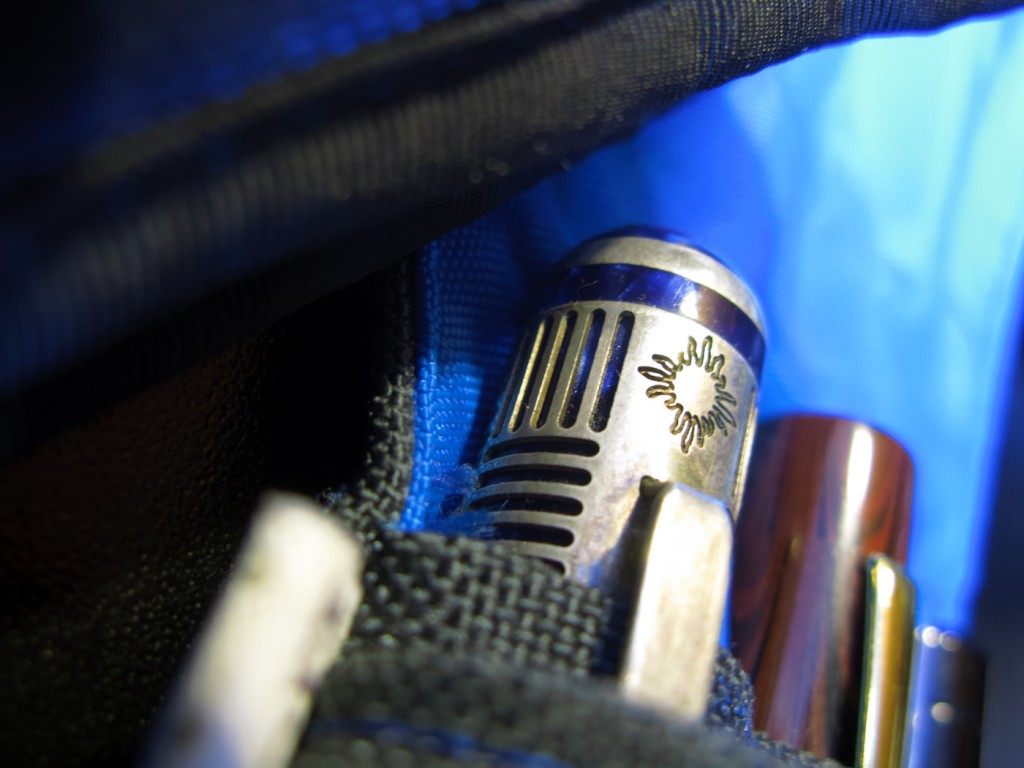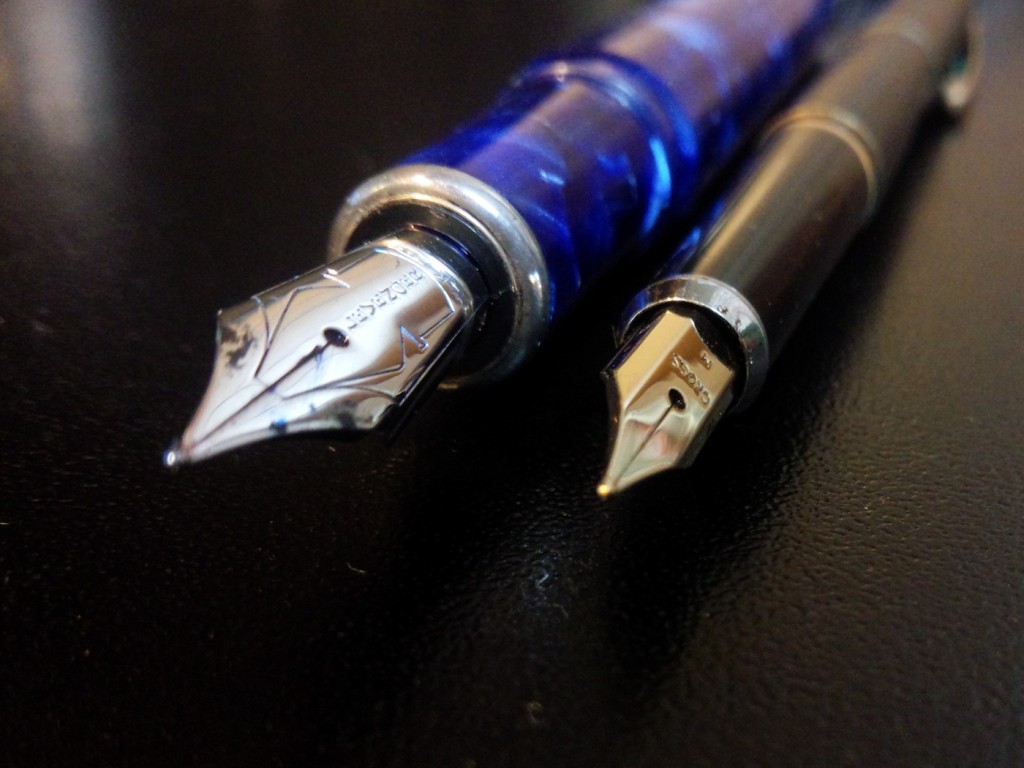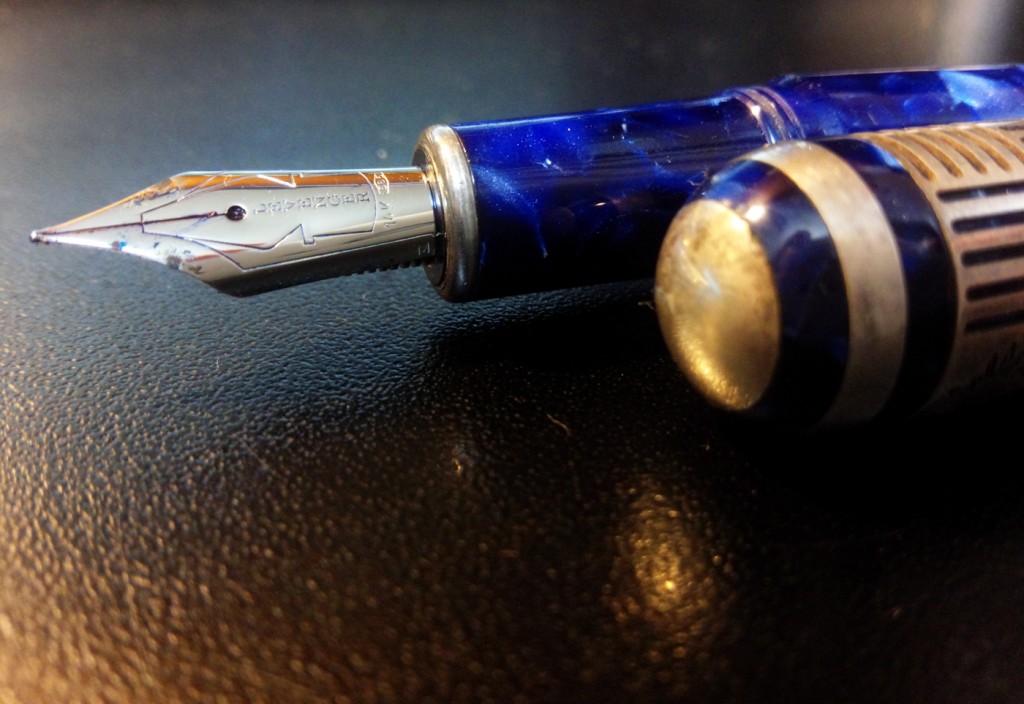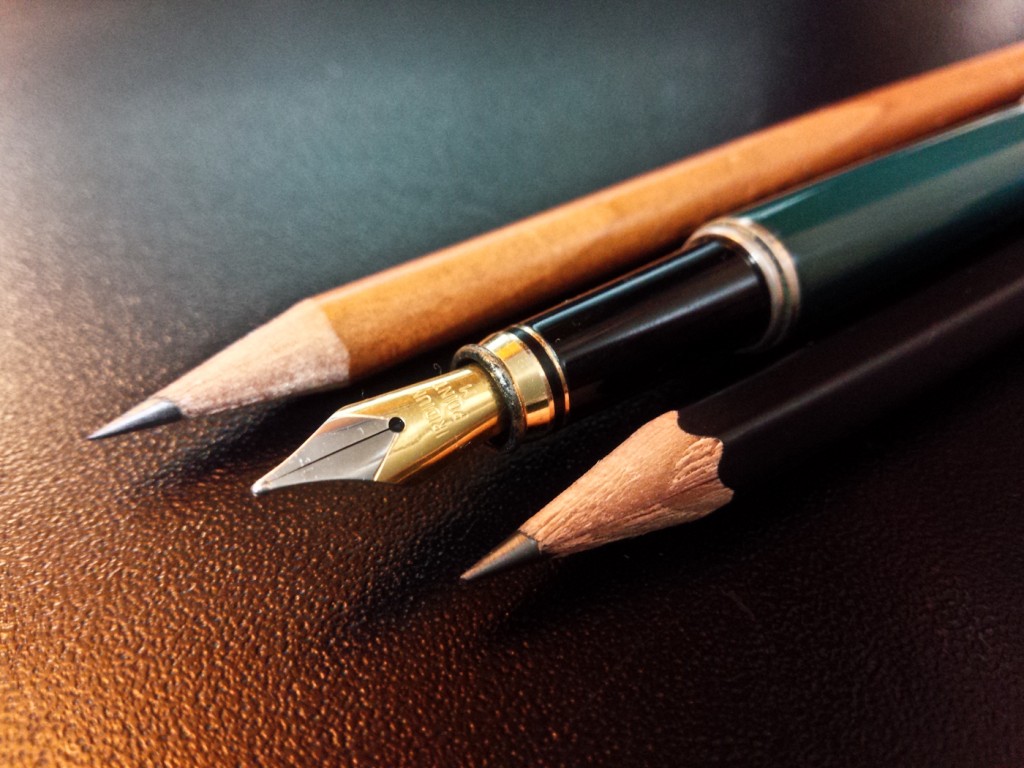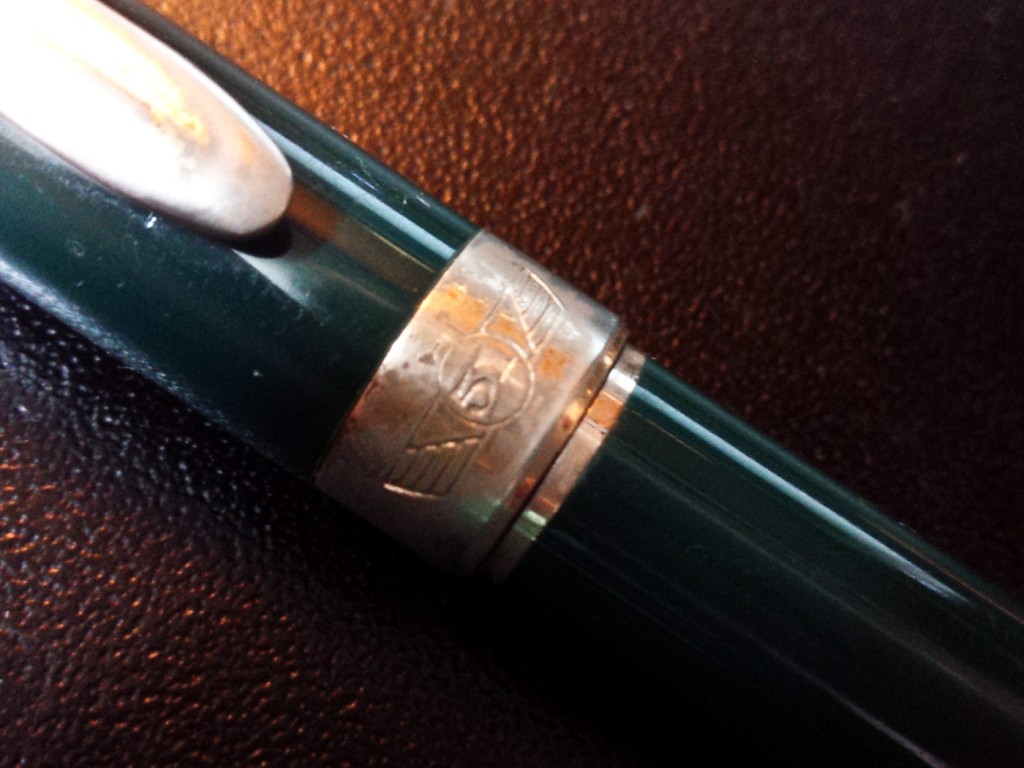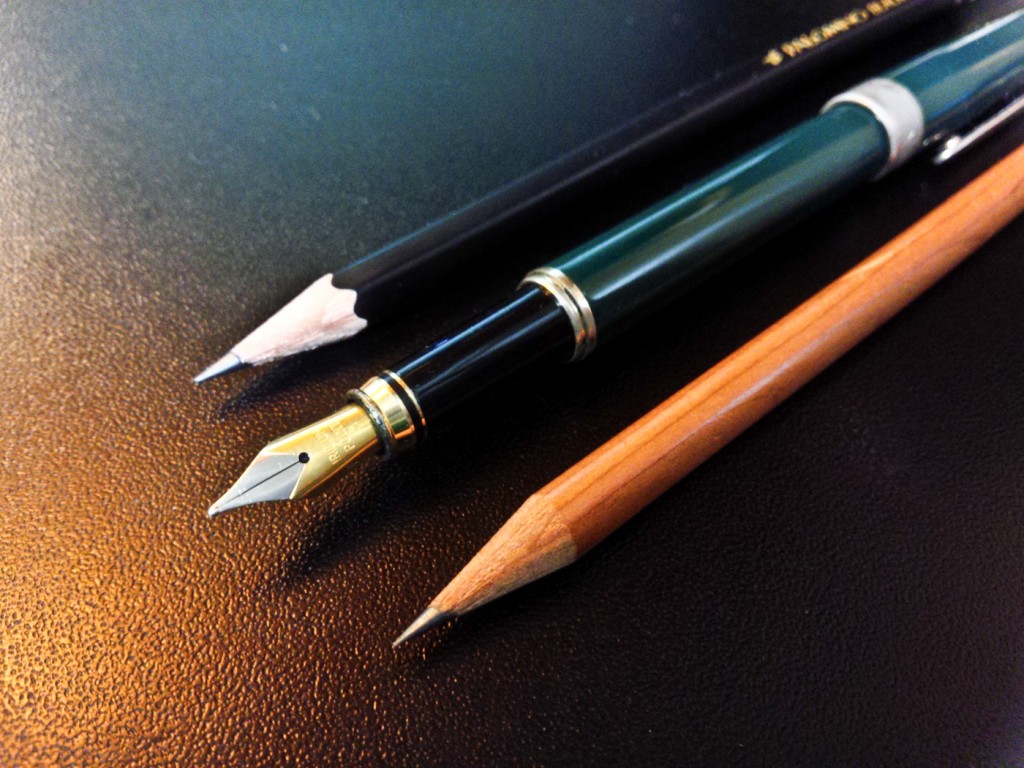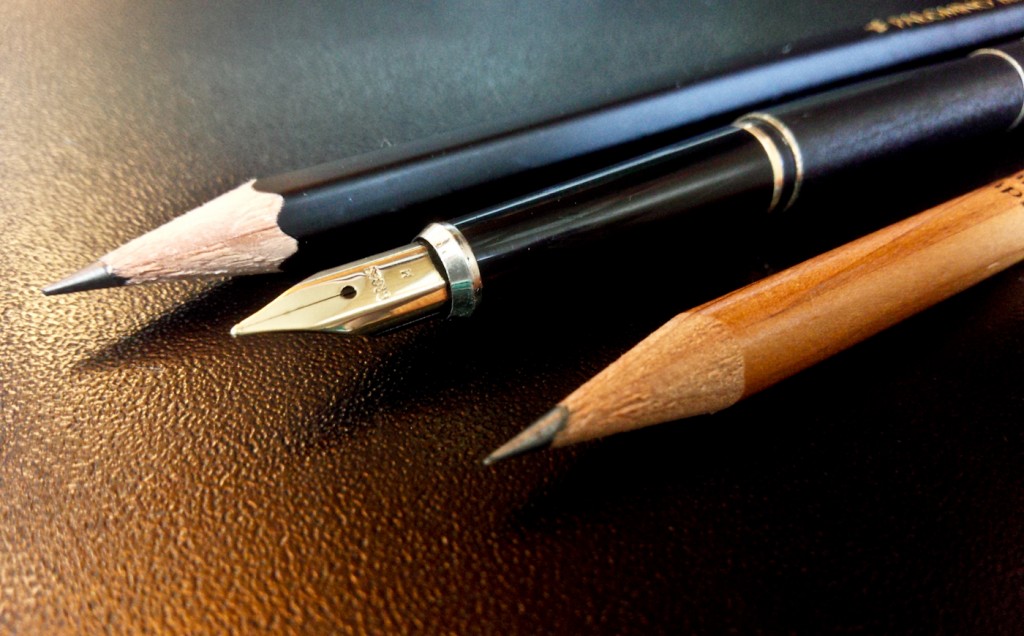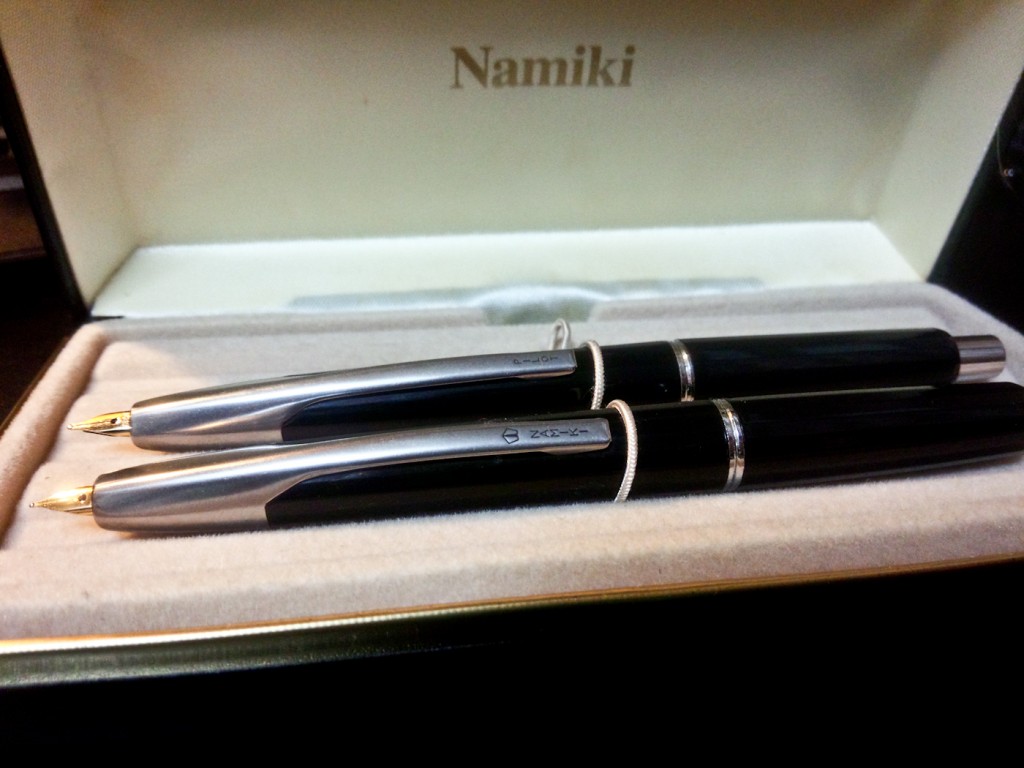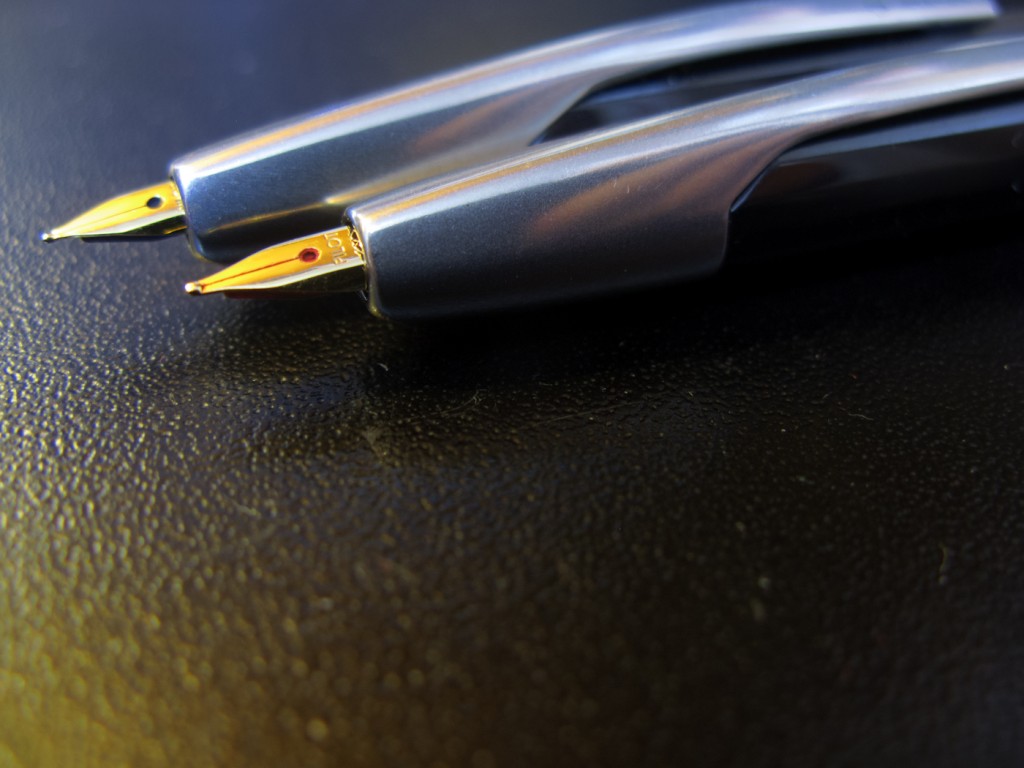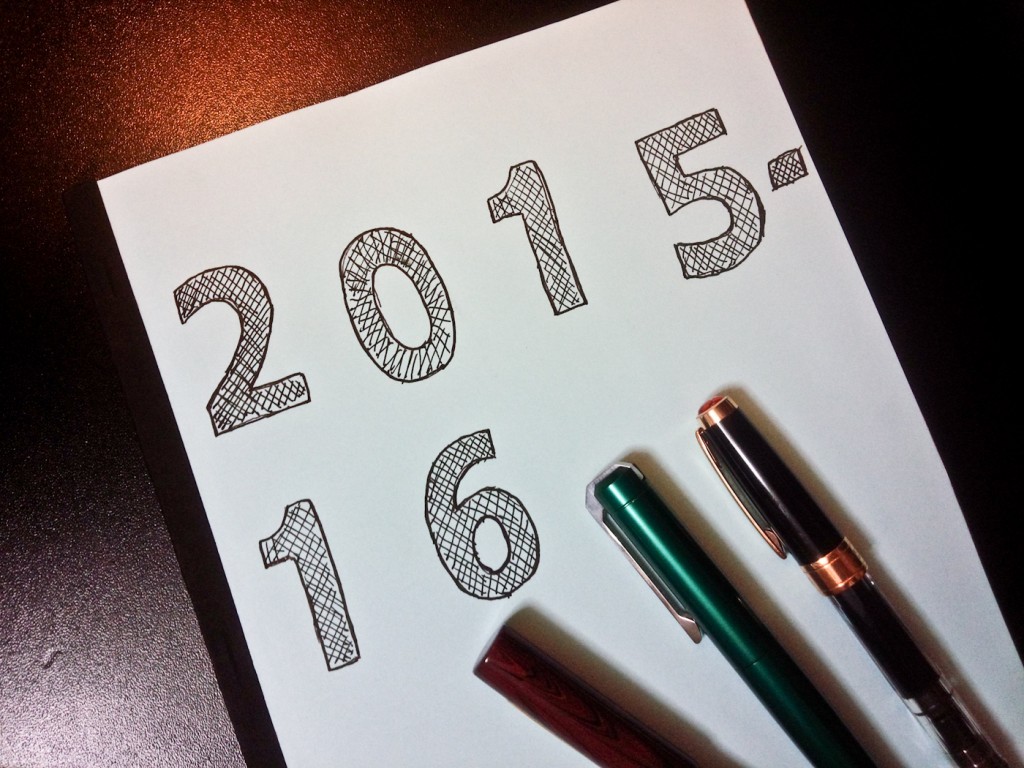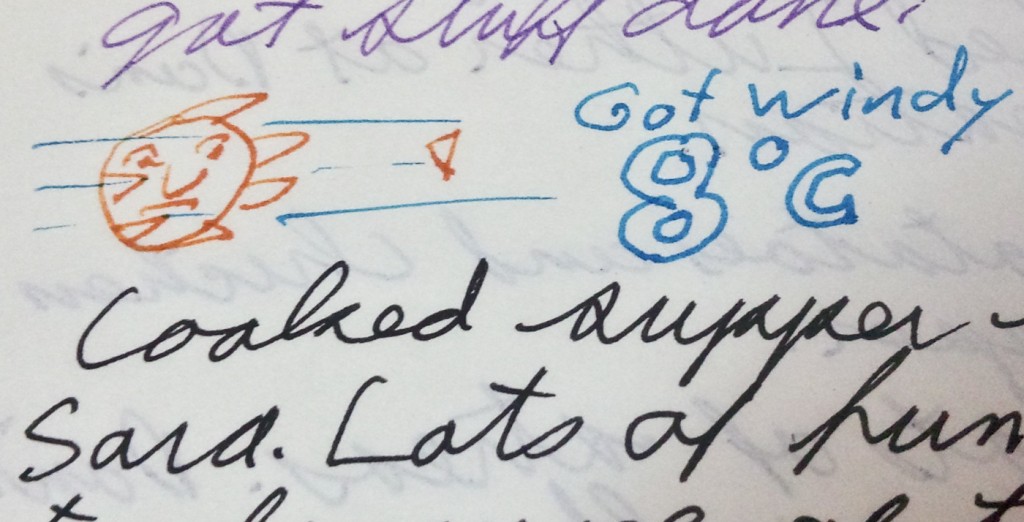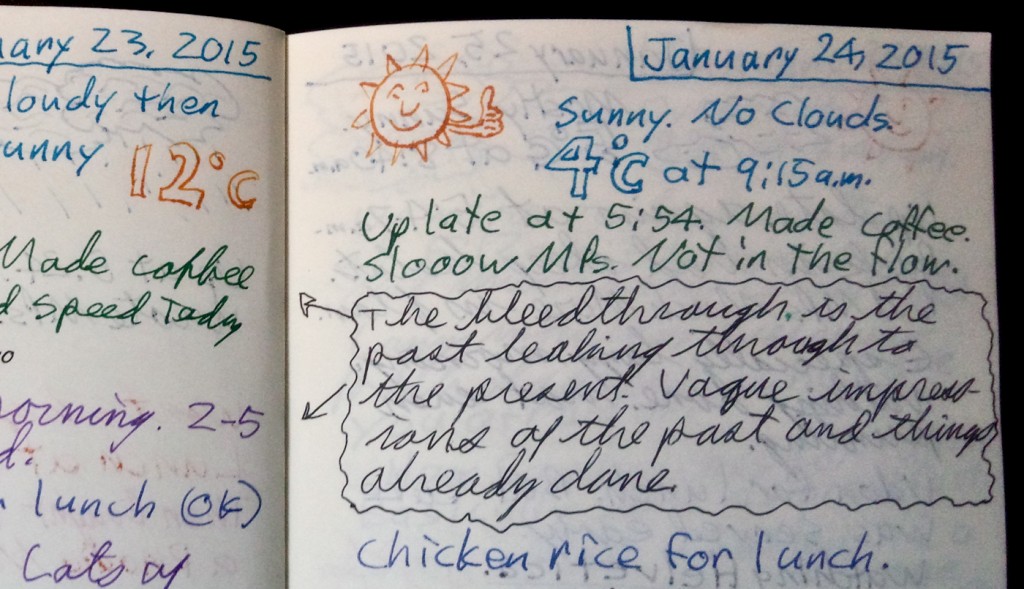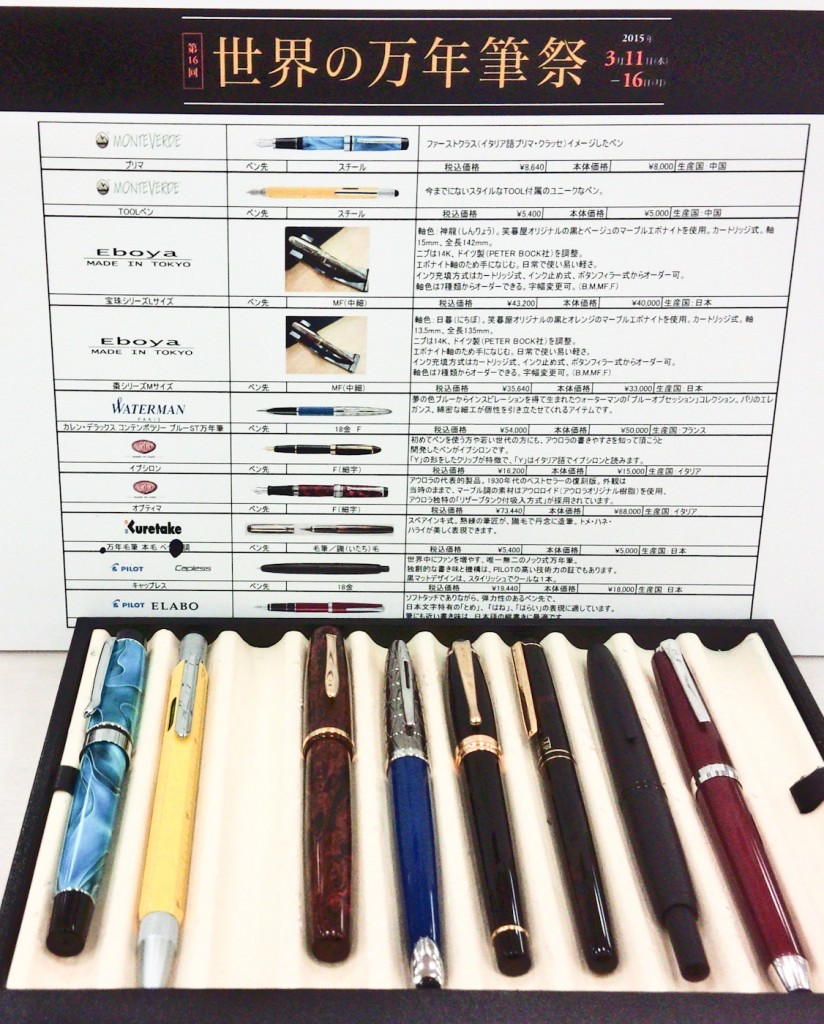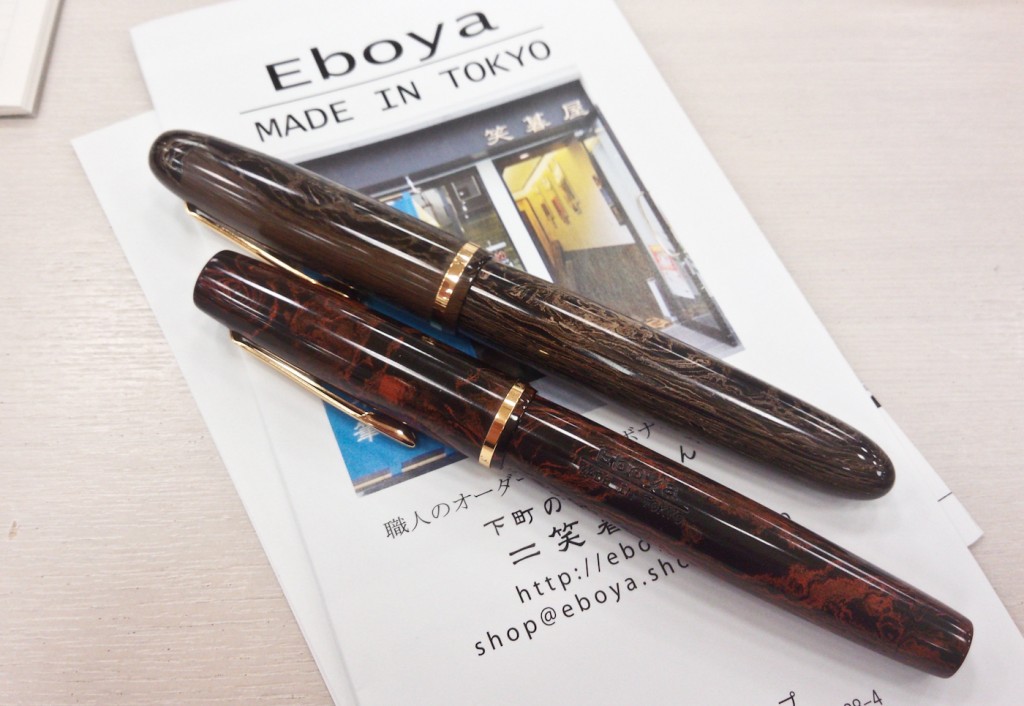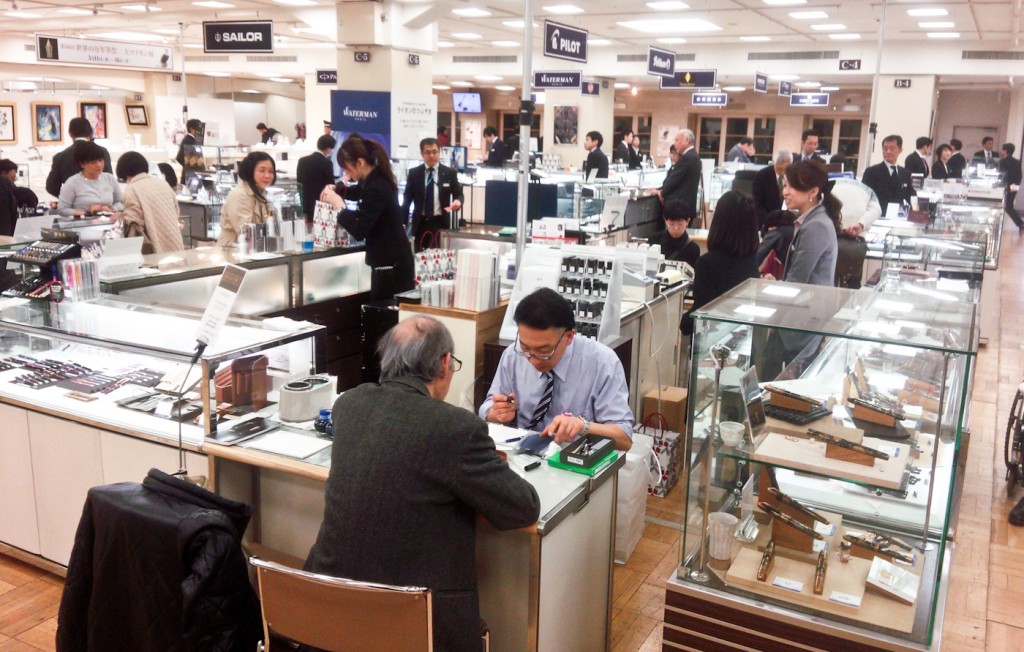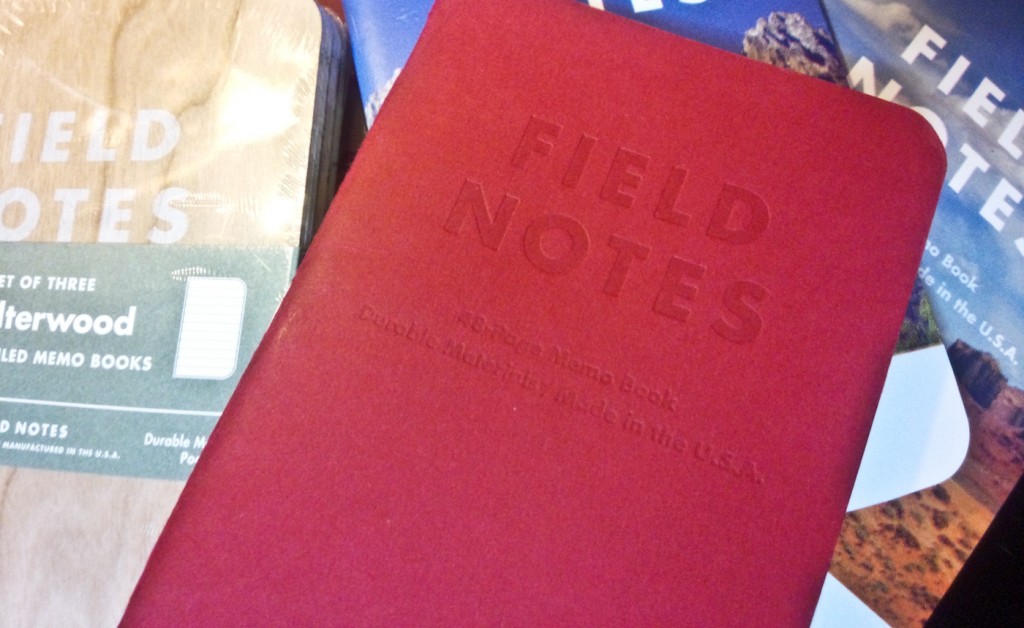It’s really depressing when you open a purchase and your first thought is “How the hell am I going to get this fixed?”
This happened to me when I bought a pen from online retailer Levenger. The pen was the Levenger “Sunset” made by Italian pen maker Stipula. It had sterling silver decorations on top of blue cracked ice acrylic and that made it look vaguely like R2-D2. I liked the look and I liked the Italian pedigree and liked that it was priced to sell after a huge price drop.
When I got it the first thing I noticed was the silver was tarnished. I emailed Levenger and their reaction was “Yeah, how about that.” In their defense, it wasn’t worth anyone’s effort or money to ship back to the USA for polishing and then have it shipped back to Japan.
I was also surprised that the word “Stipula” appeared nowhere on the pen. It only says “Made in Italy” under the Levenger Sunset inscription on the barrel to prove it wasn’t made by Levenger’s normal manufacturer.
I started using it and immediately liked the larger size. It’s 11.7 millimeters (just under half an inch) at the grip section and unposted it’s 5.4 inches (137 mm) long. Posted it’s an absurd 6.5 inches (166 mm). With the cap posted it’s too long to use comfortably.
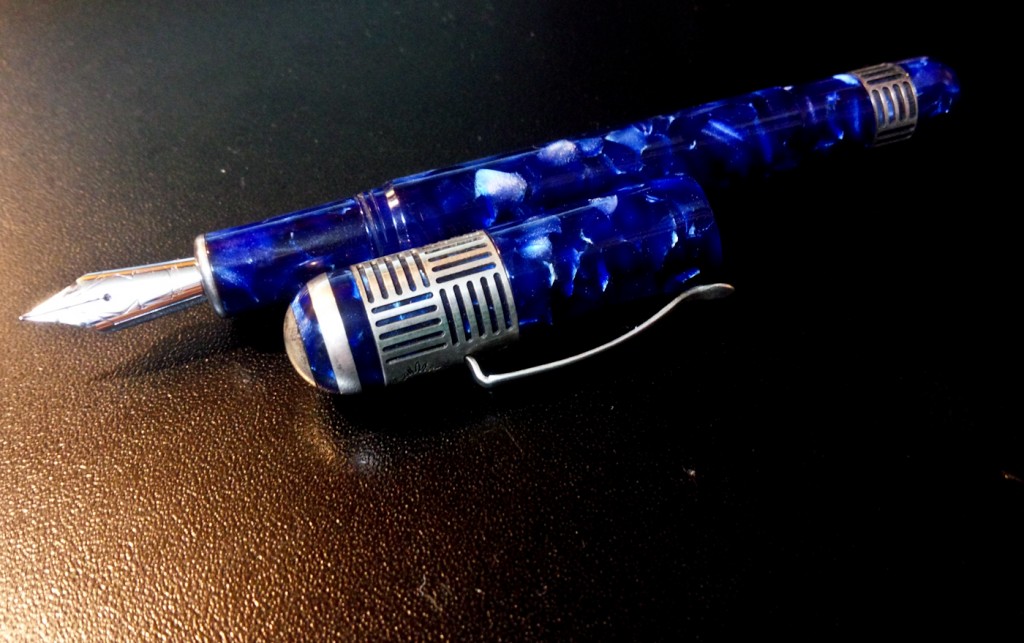
The pen and cap. I like that cracked ice acrylic. The photos, unfortunately, don’t do it full justice.
As I started using it I noticed that although it was a smooth writer–it’s a Rhodium plated 14 carat gold nib–it had an annoying problem. As I wrote, one of the tines would click out of place and I’d have to hold the pen slightly sideways to get an even ink flow. If I turned the pen over and pushed lightly I could hear the tine click back into place.
This became annoying enough that I finally put it way for a few years until last year when I sent it off to Mike Masuyama for work. He fixed the tines and smoothed the nib and it’s now one of my favorite pens. Despite its size it’s light and a pleasure to write with. It currently has Aurora blue ink in it which makes it even smoother.
The only remaining annoyance is caused by the silver plating. To accommodate the silver pattern and the sunburst (it’s not a sunset) on the cap, the clip had to be moved down the cap and this means the slot for the nib is small. Also, there’s a lot of metal inside there and it has to be cleaned frequently or it starts to corrode. Over time I’ve scratched the shoulders on the nib. It doesn’t hurt the writing experience, but I also have to be careful that everything’s centered when I put the cap back on or I risk mangling the nib.
That said, I’m pleased that after several years the pen finally became a purchase worth getting and something worth keeping.

